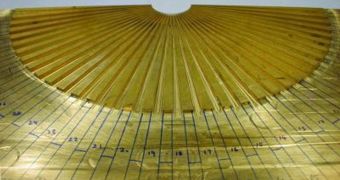Scientists at the US Department of Energy's (DOE) Lawrence Berkeley National Laboratory (Berkeley Lab) have recently managed to create an innovative, new device that may have the ability to boost the power of ultrasound medical devices and submarine radars by more than 800 percent. The new acoustic hyperlens is constructed in such a manner that it can detect objects that are one sixth of the size of the sound waves themselves, PhysOrg reports.
This means that the device could be used to resolve objects that are significantly smaller than anything current technologies can discover. Mounted on submarines, for example, it could make for an advanced imaging method that could help captains recognize obstacles or enemy vessels faster and more accurately. With as much information as possible at their disposal, the submarines could then make the correct decision, and not have to guess the nature of the threat anymore. In case of medical devices, being able to resolve smaller details could lead to doctors discovering development anomalies in babies faster, which could, in turn, increase their chances of a normal life.
“We have successfully carried out an experimental demonstration of an acoustic hyperlens that magnifies sub-wavelength objects by gradually converting evanescent waves into propagating waves. Our acoustic hyperlens relies on straightforward cutoff-free propagation and achieves deep sub-wavelength resolution with low loss over a broad frequency bandwidth,” Berkeley Lab Materials Sciences Division principal investigator Xiang Zhang explains. The expert is also the University of California in Berkeley (UCB) Nano-scale Science and Engineering Center director.
The best type of sound waves to be analyzed for information on their source consists of evanescent waves, rather than the normal, propagating ones. The thing about the former is that they normally exist only close to the source, and decay too fast for conventional lenses to pick them up. The new instrument is constructed from 36 brass fins, which are bound together in the shape of a hand-held fan. The fins are about 20 centimeters long and three millimeters thick each, and they have the ability to focus and amplify evanescent waves to a point where they can be picked up by instruments.
“As a result of the large ratio between the inner and outer radii, our acoustic hyperlens compresses a significant portion of evanescent waves into the band of propagating waves so that the image obtained is magnified by a factor of eight. We chose brass as the material for the fins because it has a density about 7,000 times that of air, a large ratio that is needed to achieve the strong anisotropy required for a flat dispersion of the sound waves,” study co-author Lee Fok, a graduate student, adds.

 14 DAY TRIAL //
14 DAY TRIAL //